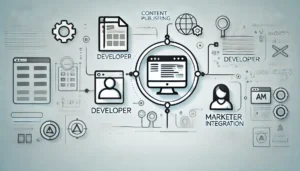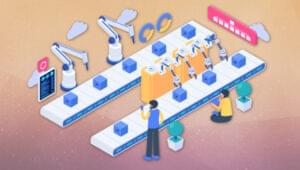In case you’ve been living on another planet and missed it, this month saw the release of Rails 1.2, a major milestone for the framework.
To coincide with this release, SitePoint this week announced the availability of our own Ruby on Rails book, Build Your Own Ruby On Rails Web Applications by Patrick Lenz. This is a terrific addition to the SitePoint library, written specifically for Rails 1.2. If you’ve yet to discover what the fuss is all about (and why Rails has web developers so excited), then you’ve got no more excuses not to take the plunge!
 For all its strengths, though, Rails can be daunting for beginners, as coming to grips with the framework requires also learning a set of skills and concepts associated with best practice web development.
For all its strengths, though, Rails can be daunting for beginners, as coming to grips with the framework requires also learning a set of skills and concepts associated with best practice web development.
Beginning programmers will therefore appreciate the attention that Patrick gives to core topics such as the model-view-controller pattern, migrations, and continuous testing, as well as his explanations of object oriented concepts and in-depth coverage of Ruby syntax.
As technical editor of the book, I’m also very proud of the attention to detail applied to the book–in particular the installation process; depending on your platform, installing Rails can be either a no-brainer or a frustrating nightmare.
For example, I haven’t seen any other Rails books on the market mention the fact that Ruby 1.8.5 is incompatible with the Rails breakpoint client (despite the fact that the Rails core team recommends using 1.8.5, and that the latest versions of MacPorts and InstantRails also both install 1.8.5). In my opinion, the ability to use this indispensable tool makes sticking with Ruby 1.8.4 well worth it–having cut my teeth in the Java world, I can’t imagine trying to track down a bug in my code without being able to set breakpoints.
The best part, however, is definitely the example application that you’ll have built by the end of the book–a clone of the popular social news site digg (just to be cheeky, we’ve called the application Shovell), complete with Ajax-voting, tagging, a per-user voting history and more. Yeah baby, it’s all Web 2.0 from here!
So if you’ve been sitting on an idea for the Next Big Thing™ for a while now, this book might just be the one that shows you how to turn that idea into a reality.
 Matthew Magain
Matthew MagainMatthew Magain is a UX designer with over 15 years of experience creating exceptional digital experiences for companies such as IBM, Australia Post, and sitepoint.com. He is currently the Chief Doodler at Sketch Group, Co-founder of UX Mastery, and recently co-authored Everyday UX, an inspiring collection of interviews with some of the best UX Designers in the world. Matthew is also the creator of Charlie Weatherburn and the Flying Machine.



































































































